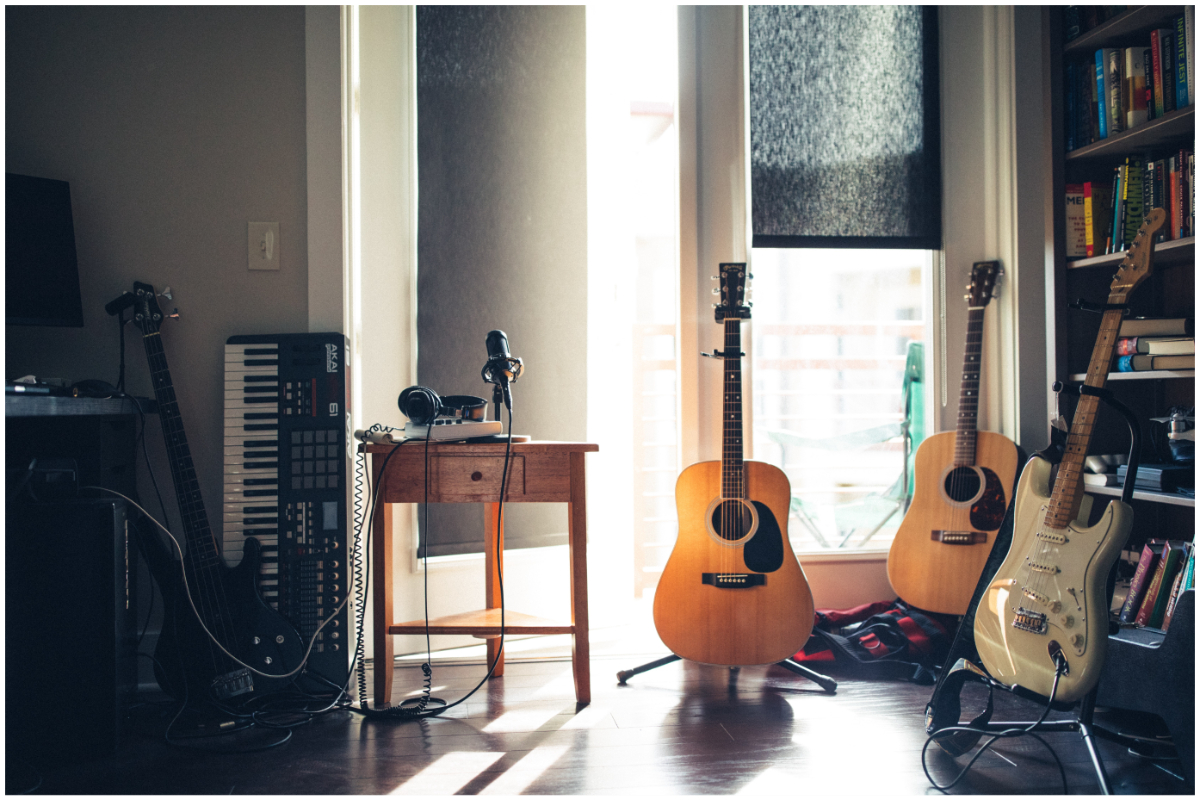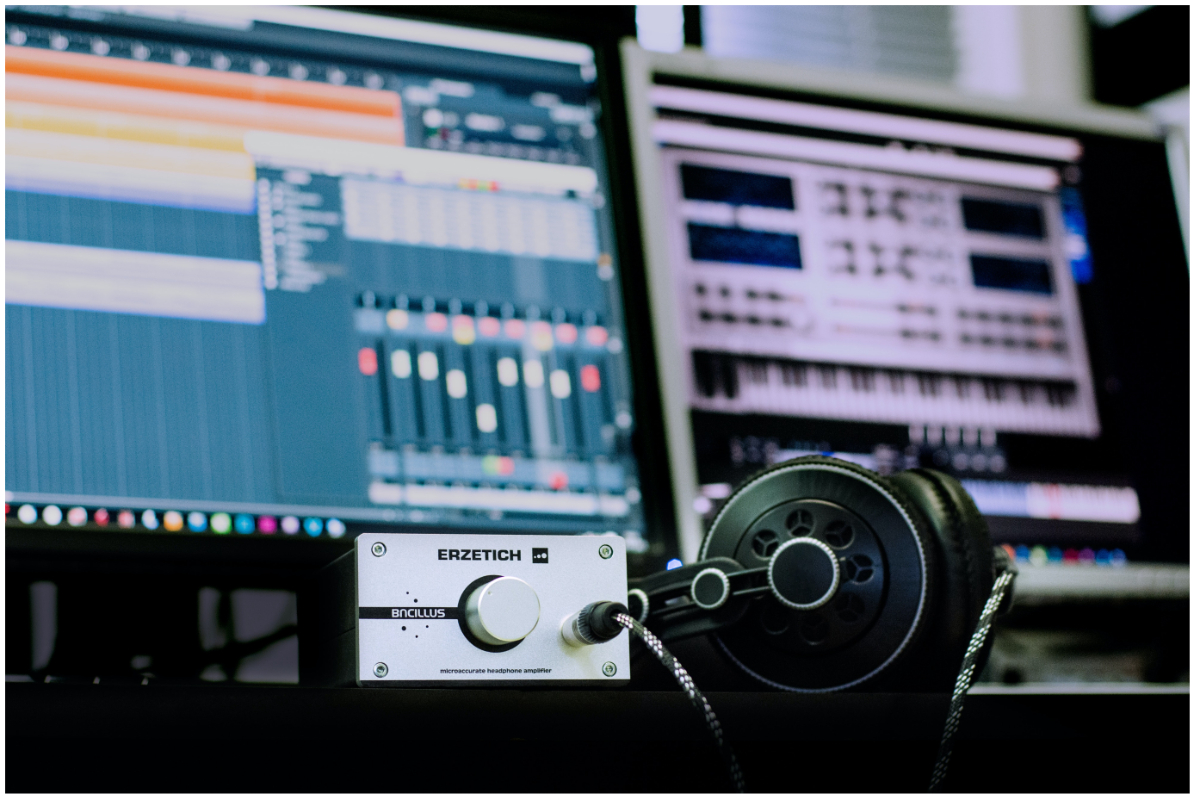If you love music, you know how important it is to have a space where you can crank up the volume and get lost in the sound. There’s no better way to do that than by creating your own at-home music studio. From equipment to acoustics, we’ve got you covered with tips on designing the ultimate home music room from the experts who know best. Whether you’re living in Nashville, TN, or Seattle, WA, read on to learn how you can create an authentic studio-like experience at home.

1. Start with the basics
Enjoying music is something you can do every day, and building a dedicated listening room can enhance the experience. First, a proper listening room shouldn’t be square in dimension. Next, you ideally want a dedicated power supply going to that room. Since power is the foundation of any great system, a panel box and three (or more) dedicated 20amp circuits is a good starting point. Noise from refrigerators, air conditioning units, lights, etc., can all contaminate the electricity and affect the sound. Finally, there are no “best speakers” for a music room. Audio stores like us consult with customers to identify the best speakers for their room, budget, and music preferences. – Suncoast Audio, Sarasota, FL
2. Do research to find the right chair for you
A great idea when getting started to create a useful and efficient space for making music is to think about the seating position you’ll be in when using the space. Office chairs may seem like a good and comfortable idea at first, but for playing your instrument, you may want to look at chairs with folding armrests or stools with a foothold or guitar stand. – ModernTone Studios, Lafayette, CA
3. Relax with a cold drink
Get a mini-fridge and stock it with a variety of drinks. Cold beverages are refreshing and can help keep the creative juices flowing when you’re buzzing with ideas. But make sure not to keep your fridge next to expensive gear, and be cautious where you place open cans (a bottle-only policy might not be a bad idea). – David Andrew Wiebe from Music Entrepreneur HQ
4. Invest in high-quality materials
Don’t confuse soundproofing with acoustic treatment. Acoustic treatment is intended to control the sound inside the room, while soundproofing is for minimizing the sound level that passes through the walls. Also, don’t use glass wool in your home studio. By now, there are alternative materials from recyclate that work the same and don’t release harmful microparticles. Finally, use acoustic furniture to get the best possible sound experience. If you use cheap foam pyramids, you’ll get cheap sound from your expensive speakers. – Ekustik Premium Acoustics
Less echo makes for a better music experience for musicians and audio enthusiasts. With sustainable acoustic panels like ours, a $20,000 music system can sound better than a $100,0000 music system in a room with poor acoustics. – SilentFiber
5. Sound more professional with soundproofing
Our walls at home typically aren’t designed for the ideal audio production setting. Soundproofing your walls will help your home studio music production sound more professional and not like something recorded in your bedroom. There are many options for acoustic treatments depending on your budget. Foam panels are one of the most affordable options. – Soundbrenner
Microphones, recorders, and daws are all pieces of audio recording equipment that you’ll need to record your hit song. The most important item is a microphone to capture quality sound. The next crucial point to keep in mind is to soundproof your room. Soundproofing is the key to recording professional, high-quality music. – Flintzy
6. Create a hands-on experience for children
When teaching young children, engagement and variety are very important, so gear your room to accommodate those needs. Organize your space so many different activities are easily accessible and time isn’t wasted trying to find materials. Keeping things in individual storage bins for easy access will allow your teachers to quickly change activities without losing their momentum. For your students, make sure there are many “hands-on” moments for them to play, tinker, and experiment with instruments such as maracas, keyboards, and hand percussion such as xylophones. We created a “music fence” which has instruments permanently fixed to it and allows for the children to spend time making sounds and having fun. – Sayla Music Academy, Lodi, CA
7. Soundproof with a rug
A cost-effective way to help soundproof your room is by buying the right kind of rug. Cut-pile rugs are best at absorbing sound due to their larger surface area. Anything made of fur, jute, or wool will capture sound better and help you avoid potentially annoying neighbors, housemates, or family. – Know Your Instrument
8. Invest in wired headphones
The best improvement to a music room is a good pair of wired headphones, so you can play your instruments without worrying about disturbing others, allowing you to fit in practice whenever your time allows. A few bonus tips are to keep your precious instruments out of the path of pets and playful kids by mounting your instruments on the wall and when you buy a music stand, make sure it’s made of metal and has a solid back. – Skoove

9. Get creative to dampen noise
While there’s no way to completely soundproof a piano (unless it’s a digital keyboard with headphones or an actual recording studio). Things that can help dampen a piano sound include thick carpets, keeping the piano lid closed, placing a thick blanket over the piano, and having upholstered furniture that absorbs sound (couches and chairs). Pianos should be placed next to an outside-facing wall so that the sound doesn’t transmit through the wall to other rooms, but be wary of air vents and direct sunlight, which can damage acoustic pianos. – Pianu
10. Find a special place for your instrument
Find homes for each instrument outside of their carrying cases: this keeps the instruments safe, your music room clean, and most importantly – accessible for when inspiration strikes. Also, remember that you’ll need comfortable chairs without arms for good playing posture – armchairs get in the way of playing every instrument correctly. – Jam with Lauren
Create a space where you can easily access instruments and start playing immediately without rearranging the furniture. This helps to remove any obstacles when getting started. For example, having a dedicated space for a piano means simply pulling out the piano bench and starting to play with ease. – Charlotte Chipperfield, Director of Marketing at Hoffman Academy

 United States
United States Canada
Canada